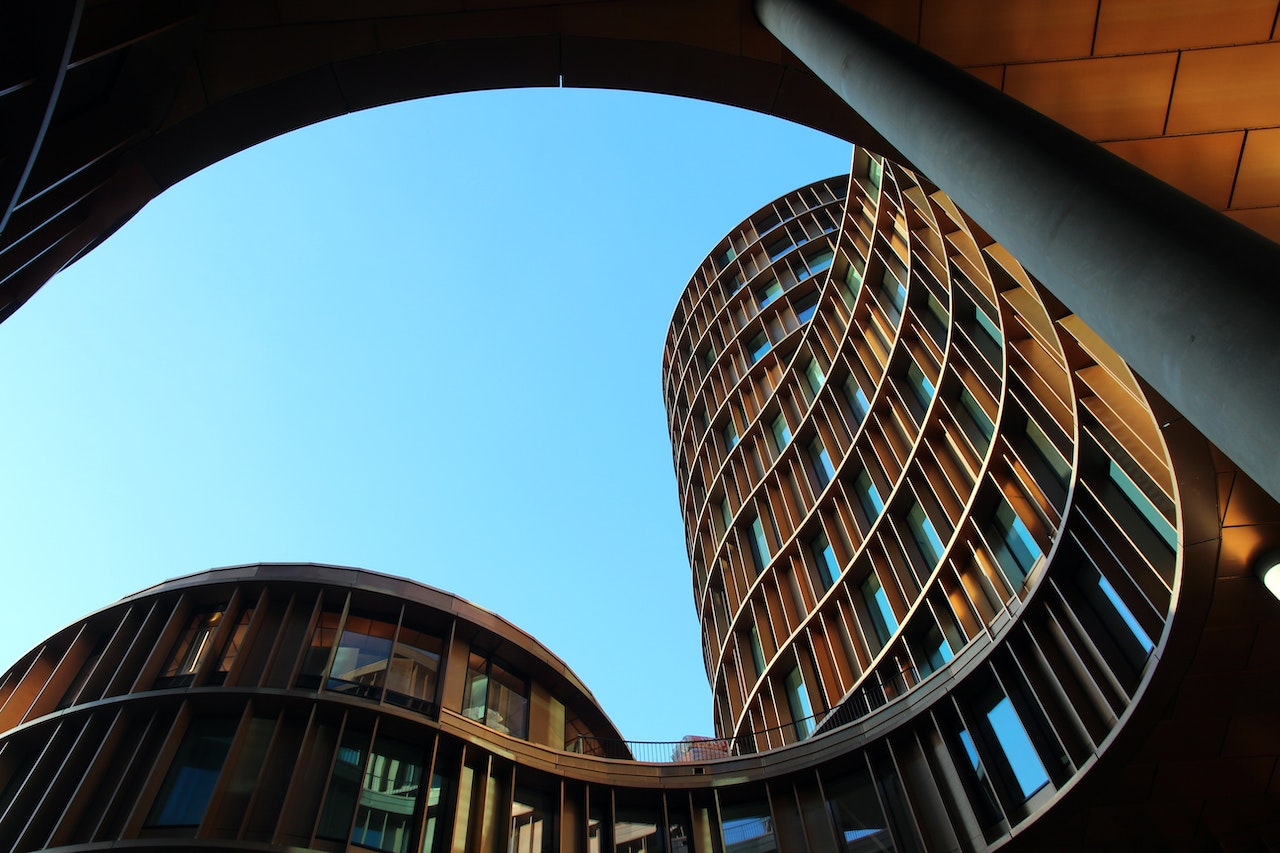The Role Of Architecture In Promoting Social Equality And Justice - How Architecture Can Foster Social Justice
Architecture is more than just designing and constructing buildings. The role of architecture in promoting social equality and justice plays a crucial part in shaping our society and creating spaces that promote social equality and justice. Throughout history, architecture has been used to reflect the values and beliefs of society.
Author:George EvansMar 16, 20232.6K Shares332K Views

Architecture is more than just designing and constructing buildings. The role of architecture in promoting social equality and justiceplays a crucial part in shaping our society and creating spaces that promote social equality and justice. Throughout history, architecture has been used to reflect the values and beliefs of society.
How can architecture promote social equality and justice? In this article, we will explore the role of architecture in promoting social equality and justice, and how architects can design spaces that support a more equitable and just society.
The History Of Architecture And Social Justice
Architecture has played a significant role in reflecting the values and beliefs of society throughout history. In ancient times, the pyramids of Egypt were not only structures of grandeur and beauty, but they also reflected the power and wealth of the ruling class.
Similarly, in medieval Europe, Gothic cathedrals were built to reflect the power and influence of the church. However, the role of architecture in promoting social justice and equality did not come until much later.
In the late 19th and early 20th centuries, architects began to focus on designing buildings that were more functional and practical.
The modernist movement emerged, and architects such as Le Corbusier and Walter Gropius emphasized the importance of designing buildings that met the needs of the people who used them.
This led to the creation of social housing projects, such as the Unité d'Habitation in France, which aimed to provide affordable and functional housing for the working class.
In the United States, the Civil Rights Movement of the 1950s and 1960s brought attention to the inequalities faced by Black Americans in housing and public spaces.
Architects and urban planners became involved in the movement, and they designed buildings and public spaces that promoted equality and social justice.
For example, the National Museum of African American History and Culture in Washington D.C. was designed by a team of architects and planners to reflect the experiences and contributions of African Americans to American society.
The Role Of Architecture In Promoting Social Equality And Justice
Architecture has the power to shape our built environment and our society. From public spaces to private homes, the design of buildings and infrastructure can either perpetuate social inequality or actively work towards creating a more just and equitable society.
Accessible Design For All
One of the ways architecture can promote social equality and justice is through accessible design. Accessible design means designing buildings and public spaces that can be used by everyone, regardless of their physical abilities.
This includes designing buildings with ramps, elevators, and wide doorways to accommodate people who use wheelchairs, as well as designing public spaces with tactile paving and audio signals for people who are blind or visually impaired.
Accessible design not only benefits people with disabilities, but it also benefits everyone who uses the space.
For example, a building with a ramp is easier to access for someone pushing a stroller or carrying heavy packages. Accessible public space is also more welcoming and inclusive for everyone who uses it.
Designing For Diverse Communities
Another way architecture can promote social equality and justice is through designing for diverse communities.
This means designing buildings and public spaces that reflect the cultural, social, and economic diversity of the community they serve. For example, a community center planned for a diverse community might include spaces for cultural events, language classes, and job training programs.
Designing for diverse communities also means creating spaces that are welcoming and inclusive for everyone. This includes designing public spaces with seating and shade for people to rest, as well as designing buildings with natural light and green spaces to promote health and well-being.
Sustainable Design For A Better Future
Architecture can also promote social equality and justice through sustainable design. Sustainable design means designing buildings and public spaces that are environmentally responsible and sustainable for future generations.
This includes designing buildings with energy-efficient systems, using sustainable materials, and designing public spaces that promote sustainability and reduce waste.
Sustainable design not only benefits the environment but also benefits the community. For example, a building with energy-efficient systems can reduce energy costs for residents and businesses and a public space with sustainability.
The Importance Of Diversity In Architecture
Diversity is an essential component of architecture that is often overlooked. Architecture can play a critical role in promoting diversity by creating spaces that are inclusive and accessible to all members of the community.
This can be achieved through a variety of means, such as designing buildings that are accessible to people with disabilities or providing services in multiple languages.
Another way that diversity can be promoted through architecture is by incorporating different cultural and historical elements into building design. This can help to create spaces that are reflective of the diversity of the community they serve and promote a sense of belonging and inclusion.
The National Museum Of African American History And Culture
The National Museum of African American History and Culture is a prime example of how architecture can promote diversity and social justice.
The museum was designed to reflect the cultural and historical elements of the African American community, with its design inspired by the Yoruba people of West Africa.
The building is a testament to the power of architecture to promote diversity and social justice by creating spaces that celebrate the contributions and experiences of historically marginalized communities.

Architecture and Social Justice
Sustainable Architecture As A Tool For Social Justice
Sustainable architectureis another way that architecture can promote social justice. Sustainable design prioritizes the use of environmentally friendly materials and practices, which can help to reduce the negative impact of buildings on the environment.
This can be particularly important in communities that are disproportionately affected by environmental degradation.
In addition, sustainable design can help to promote social justice by prioritizing the needs of vulnerable communities, such as those living in poverty or facing displacement due to climate change.
For example, sustainable design can incorporate features such as green roofs and community gardens, providing access to fresh produce in areas with limited access to healthy food.
People Also Ask
What Is The National Museum Of African American History And Culture?
The National Museum of African American History and Culture is a museum in Washington D.C. that celebrates the contributions and experiences of African Americans.
How Can Sustainable Architecture Promote Social Justice?
Sustainable architecture can promote social justice by prioritizing the needs of vulnerable communities and reducing the negative impact of buildings on the environment.
What Are Some Examples Of Sustainable Design Features?
Examples of sustainable design features include green roofs, community gardens, and environmentally friendly materials.
What Is The Responsibility Of Architects And Designers In Promoting Social Justice?
Architects and designers have a responsibility to create a built environment that reflects the values of social justice and equality.
Conclusion
The role of architecture in promoting social equality and justice has a critical play in promoting social equality and justice in our society. The design of public spaces, buildings, and housing projects can either perpetuate social inequality or actively work towards creating a more just and equitable society.
By incorporating principles of diversity and sustainability into building design, architecture can help to promote social justice and create spaces that are inclusive and accessible to all members of the community.
It is up to architects and designers to use their skills and creativity to create a built environment that reflects the values of social justice and equality.

George Evans
Author
George Anderson, an exceptional architectural designer, envisions and brings to life structures that transcend the realm of imagination. With an unwavering passion for design and an innate eye for detail, George seamlessly blends form and function, creating immersive spaces that inspire awe.
Driven by a deep appreciation for the interplay of space, light, and materials, George's innovative approach redefines the possibilities of architectural design. His visionary compositions leave an indelible mark, evoking a sense of wonder and transforming the built environment.
George Anderson's transformative designs and unwavering dedication continue to shape the architectural landscape, pushing the boundaries of what is possible and inspiring generations to come.
Latest Articles
Popular Articles
